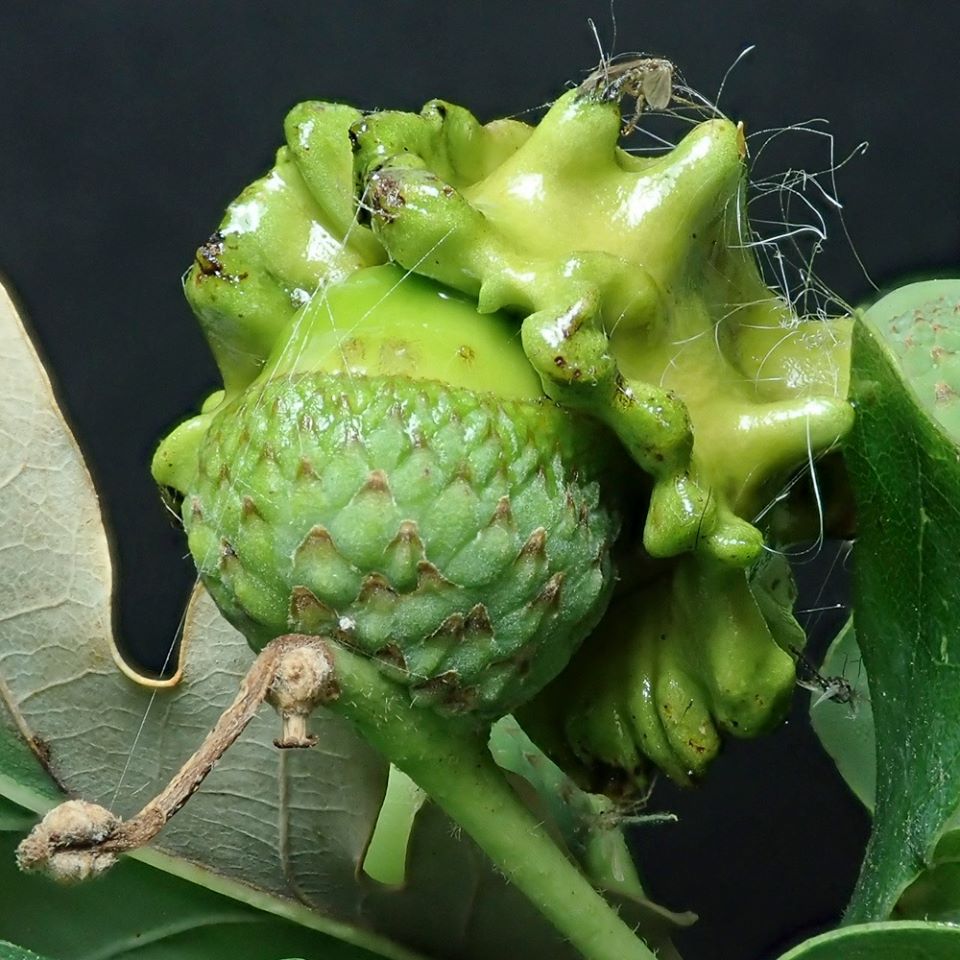Next time you walk past an oak tree, take a closer look and you might notice something a bit unusual. Perhaps some of the acorns are ripening nicely, but others seem to have mutated into an abnormal, knobbly mess. What’s going on?
It’s all down to the larvae of a miniscule wasp. There are more than 30 different species of gall wasp that lay their eggs on oak trees, and each species produces a different type of gall – essentially a protective casing that shelters the wasp larvae as they feed and grow inside. The wrinkly mutant acorns are known as Knopper Galls and are made by the Gall Wasp, Andricus quercuscalicis, which looks like a tiny black fly just a few millimetres long.
Earlier in the summer, the females of this species laid eggs on the buds of developing acorns and a fascinating transformation was triggered as soon as they hatched. Responding to a chemical signal released by the larvae, the oak tree was persuaded to sculpt its tissue into knobbly Knopper Galls in place of normal acorns.
When there are just one or two larvae inside, the result is a fairly simple, folded structure but, when several inhabitants are competing for space, the galls look more contorted, like mini explosions frozen in time.
Knopper Galls are greenish-yellow and sticky at first, but ‘ripen’ to a woody brown in early autumn, at which point they drop to the ground. The larvae pupate inside and spend the winter tucked up in their galls before emerging as adults the following spring. Interestingly, every single one of these emerging adults will be female.
They form the first phase of the Gall Wasp’s two-generation life cycle, and the freshly-emerged spring females need to seek out an evergreen turkey oak to initiate phase two, by laying their eggs on its catkins.
These develop inside a second type of gall, from which both male and female wasps will emerge. They form the second, summer generation and will go on to lay eggs on native oak trees, creating more weird and wonderful Knopper Gall sculptures.
Image Credits: Barry Yates .




Thank you—I’ve been wondering about those amazing acorns!